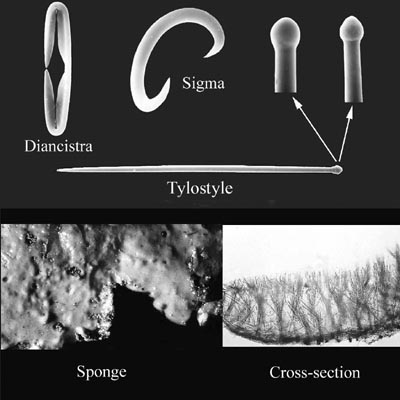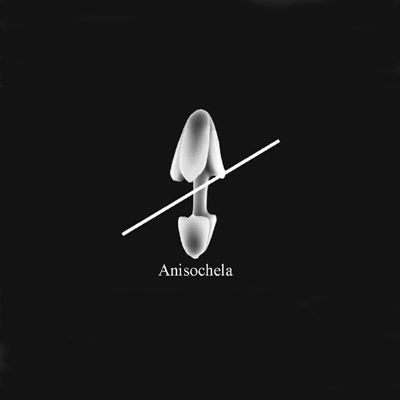[A]
Tylostyles < 300 μm.
Microscleres: Sigmas and may include Diancistras. |
 (de Laubenfels, 1932)
(de Laubenfels, 1932) |
Sponge:
Thinly, encrusting to 1-3 mm thick.
Surface: soft, fleshy, smooth.
Color: Alive: Deep blue-violet, gray-lavender; yellow-brown.
Spicules: Megascleres:
(1) Tylostyles:
142-171-187-227 um.
x 5 -7 um.
Warning: Undefined array key 4 in /home/thackerdb2/public_html/casponges/programfiles/WCS_Key4.php on line 129
Warning: Undefined array key 1 in /home/thackerdb2/public_html/casponges/programfiles/WCS_Key4.php on line 131
Microscleres:
Warning: Undefined array key 1 in /home/thackerdb2/public_html/casponges/programfiles/WCS_Key4.php on line 195
(1) Sigmas:
12 -23-25- 65 um.
Warning: Undefined array key 3 in /home/thackerdb2/public_html/casponges/programfiles/WCS_Key4.php on line 212
Warning: Undefined array key 1 in /home/thackerdb2/public_html/casponges/programfiles/WCS_Key4.php on line 195
(2) Diancistras:
23-30-33-41 um.
May be scarce.
Warning: Undefined array key 4 in /home/thackerdb2/public_html/casponges/programfiles/WCS_Key4.php on line 212
Warning: Undefined array key 2 in /home/thackerdb2/public_html/casponges/programfiles/WCS_Key4.php on line 214
Skeleton:
Ectosome fleshy, packed with microscleres.
Choanosome with scattered plumose tracts of Tylostyles, points upward and outward. These form terminal brushes at surface.
Distribution: Central, Northern California.
Depth: Intertidal to subtidal.
Note: Was Zygherpe hyaloderma.
|
|
[B]
Subtylostyles - Tylostyles > 500 μm.
Microscleres: sigmas only.
|

| | Desmacella vagabunda
Schmidt, 1870 |
Sponge:
Amorphous.
Fatal error: Uncaught Error: Undefined constant "BConsistency" in /home/thackerdb2/public_html/casponges/programfiles/WCS_Key4.php:294
Stack trace:
#0 {main}
thrown in /home/thackerdb2/public_html/casponges/programfiles/WCS_Key4.php on line 294
| |